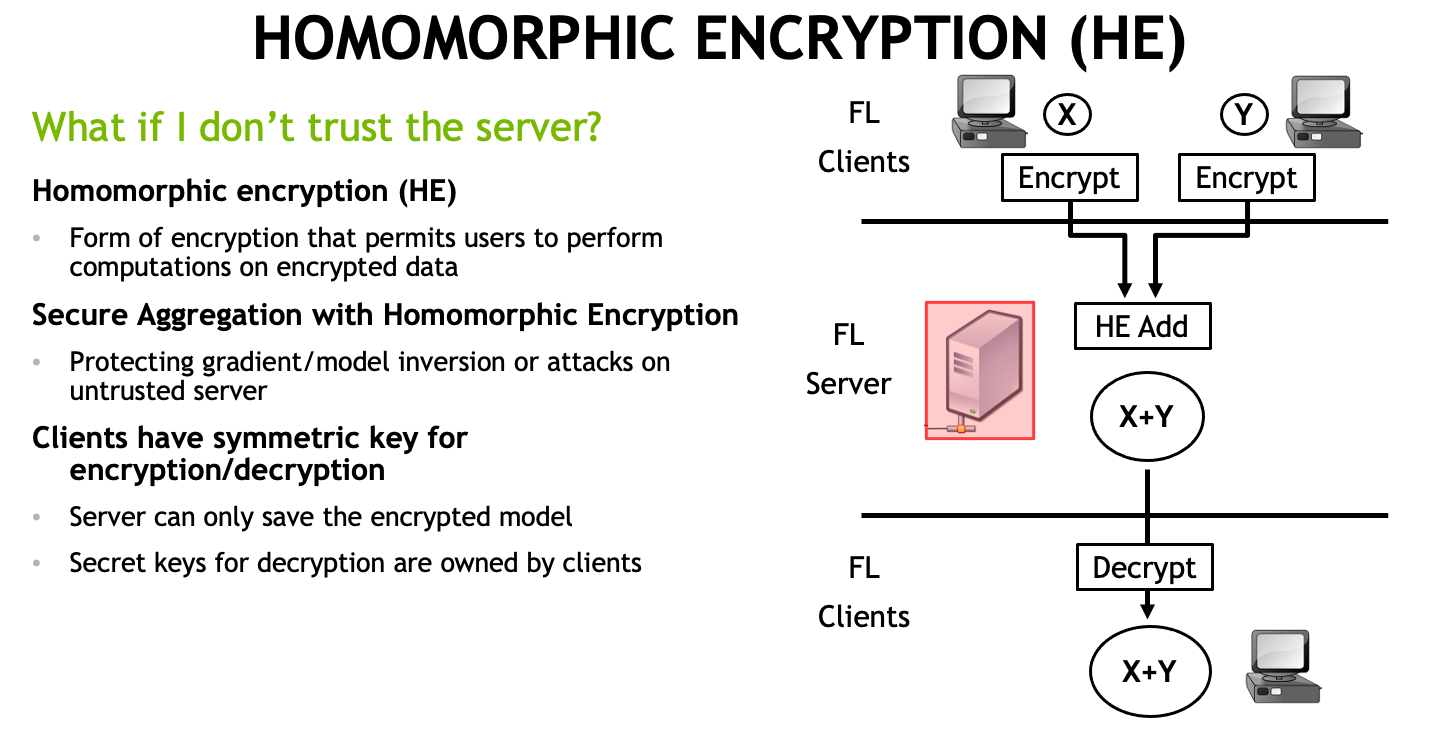Homomorphic Encryption allows data to be manipulated while it is still encrypted. This property is useful when sensitive data needs to be processed, analyzed, or transmitted. This example uses a Paillier Cryptosystem, which is a probabilistic asymmetric algorithm for public key cryptography.
The Paillier Encryption can perform four types of Homomorphic operations:
- Homomorphic Addition: Allows adding two encrypted values to get the encrypted sum or to add an encrypted value to a constant.
- Homomorphic Subtraction: Allows subtracting two encrypted values to get the encrypted difference or to subtract a constant from an encrypted value.
- Homomorphic Multiplication: Allows us to multiply an encrypted value by a constant to get the encrypted product.
- Homomorphic Division: Allows us to divide an encrypted value by a constant to get the encrypted division.
The Homomorphic Encryption provides a powerful tool for secure computation on sensitive data. Paillier Encryption is just one example of a Homomorphic Encryption scheme, and there are many other schemes that offer different properties and capabilities.
In the sandbox script file, we first generate a new public/private key pair using the generate_paillier_keypair function from the paillier module. Then, we use the public key to encrypt the numbers using the encrypt method. To perform the math operations on the encrypted numbers/constants, we can simply use the +,-,*,/ operators, which overloads the default behavior of the paillier.EncryptedNumber class. Finally, we can use the private key to decrypt the results and verify that the operations are correct.
Before running this script, make sure you have the phe library installed. You can install it using the following command:
pip install pheThe script performs the following steps:
- Generates a public and private keypair for Paillier encryption.
- Defines plain constants
w,x,y, andz. - Encrypts the plain constants using the generated public key.
- Performs various mathematical operations on the encrypted variables.
- Decrypts the results of the mathematical operations using the private key.
- Prints the decrypted results.
from phe import paillier
# Generate a public + private keypair
public_key, private_key = paillier.generate_paillier_keypair()
# Plain constants
w = 5
x = 10
y = 20
z = 40
# Encrypted variables
encrypted_w = public_key.encrypt(w)
encrypted_x = public_key.encrypt(x)
encrypted_y = public_key.encrypt(y)
encrypted_z = public_key.encrypt(z)
# Math operations on encrypted variables
encrypted_addition = encrypted_x + encrypted_y
encrypted_subtraction = encrypted_z - encrypted_w
encrypted_multiplication = x * encrypted_y
encrypted_division = encrypted_z / w
# Decrypted math operations results
decrypted_addition = private_key.decrypt(encrypted_addition)
assert decrypted_addition == 30
decrypted_subtraction = private_key.decrypt(encrypted_subtraction)
assert decrypted_subtraction == 35
decrypted_multiplication = private_key.decrypt(encrypted_multiplication)
assert decrypted_multiplication == 200
decrypted_division = private_key.decrypt(encrypted_division)
assert decrypted_division == 8
print("decrypted_addition: ", decrypted_addition)
print("decrypted_subtraction: ", decrypted_subtraction)
print("decrypted_multiplication: ", decrypted_multiplication)
print("decrypted_division: ", decrypted_division)- The script imports the necessary
pailliermodule from thephelibrary. - The
generate_paillier_keypair()function is called to generate a public and private keypair for Paillier encryption. - The script defines four plain constants:
w,x,y, andz. - The plain constants are encrypted using the
encrypt()method of the public key object. The resulting encrypted values are stored in variablesencrypted_w,encrypted_x,encrypted_y, andencrypted_z. - Various mathematical operations are performed on the encrypted variables using standard arithmetic operators (
+,-,*,/). These operations are done directly on the encrypted values. - The results of the mathematical operations are decrypted using the
decrypt()method of the private key object. The decrypted values are stored in variablesdecrypted_addition,decrypted_subtraction,decrypted_multiplication, anddecrypted_division. - Assertions are used to verify that the decrypted results match the expected values.
- Finally, the decrypted results are printed to the console.
When you run the script, you should see the following output:
decrypted_addition: 30
decrypted_subtraction: 35
decrypted_multiplication: 200
decrypted_division: 8The output confirms that the mathematical operations on the encrypted values were performed correctly and the decrypted results match the expected values.
This script demonstrates the basic usage of a Paillier Cryptosystem for Homomorphic Encryption operations. You can modify the script and explore more complex operations and scenarios supported by the library. Remember to handle key management securely as it is crucial for maintaining the privacy and security of the encrypted data.
